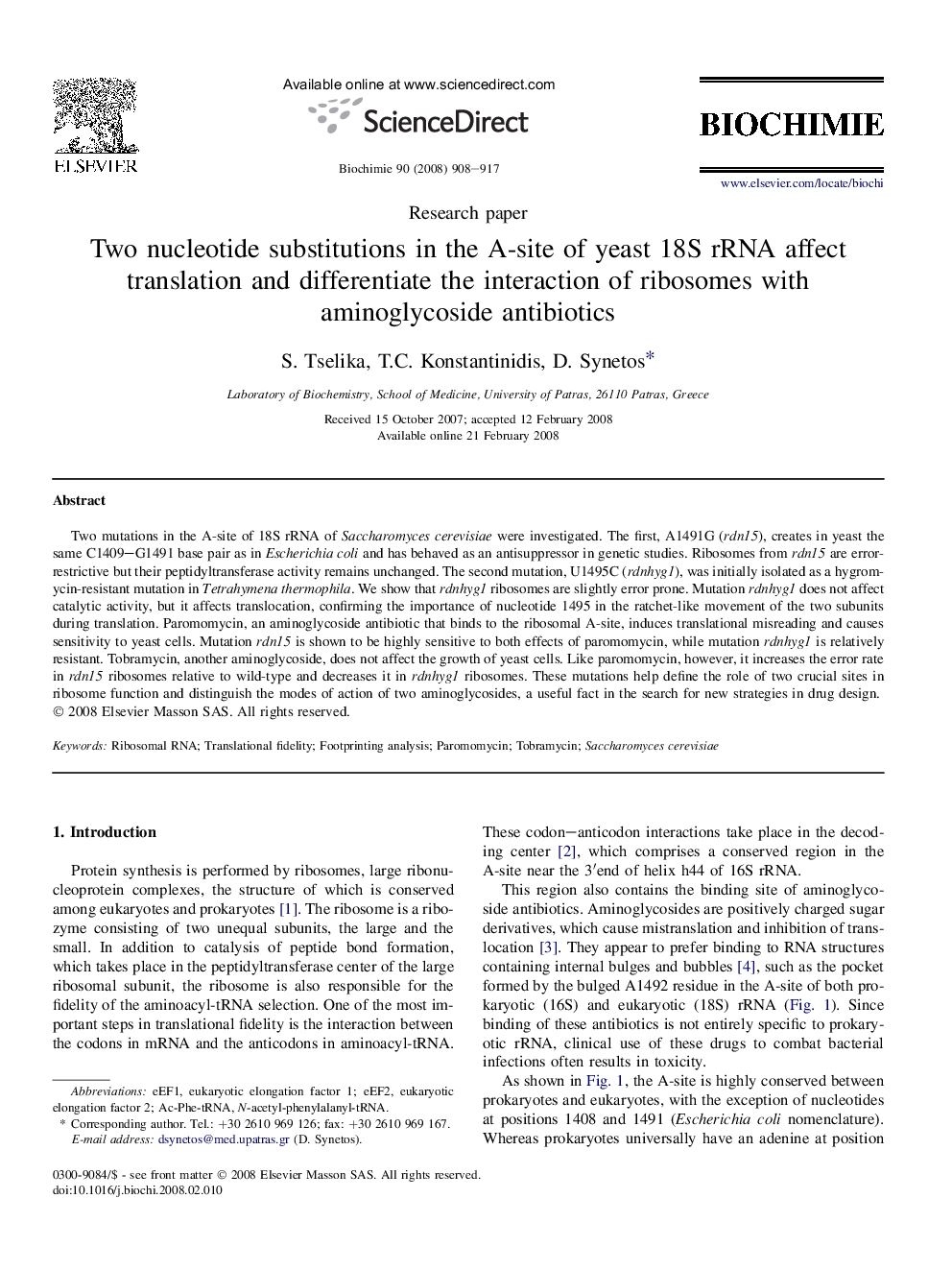| Article ID | Journal | Published Year | Pages | File Type |
|---|---|---|---|---|
| 1953314 | Biochimie | 2008 | 10 Pages |
Two mutations in the A-site of 18S rRNA of Saccharomyces cerevisiae were investigated. The first, A1491G (rdn15), creates in yeast the same C1409–G1491 base pair as in Escherichia coli and has behaved as an antisuppressor in genetic studies. Ribosomes from rdn15 are error-restrictive but their peptidyltransferase activity remains unchanged. The second mutation, U1495C (rdnhyg1), was initially isolated as a hygromycin-resistant mutation in Tetrahymena thermophila. We show that rdnhyg1 ribosomes are slightly error prone. Mutation rdnhyg1 does not affect catalytic activity, but it affects translocation, confirming the importance of nucleotide 1495 in the ratchet-like movement of the two subunits during translation. Paromomycin, an aminoglycoside antibiotic that binds to the ribosomal A-site, induces translational misreading and causes sensitivity to yeast cells. Mutation rdn15 is shown to be highly sensitive to both effects of paromomycin, while mutation rdnhyg1 is relatively resistant. Tobramycin, another aminoglycoside, does not affect the growth of yeast cells. Like paromomycin, however, it increases the error rate in rdn15 ribosomes relative to wild-type and decreases it in rdnhyg1 ribosomes. These mutations help define the role of two crucial sites in ribosome function and distinguish the modes of action of two aminoglycosides, a useful fact in the search for new strategies in drug design.
